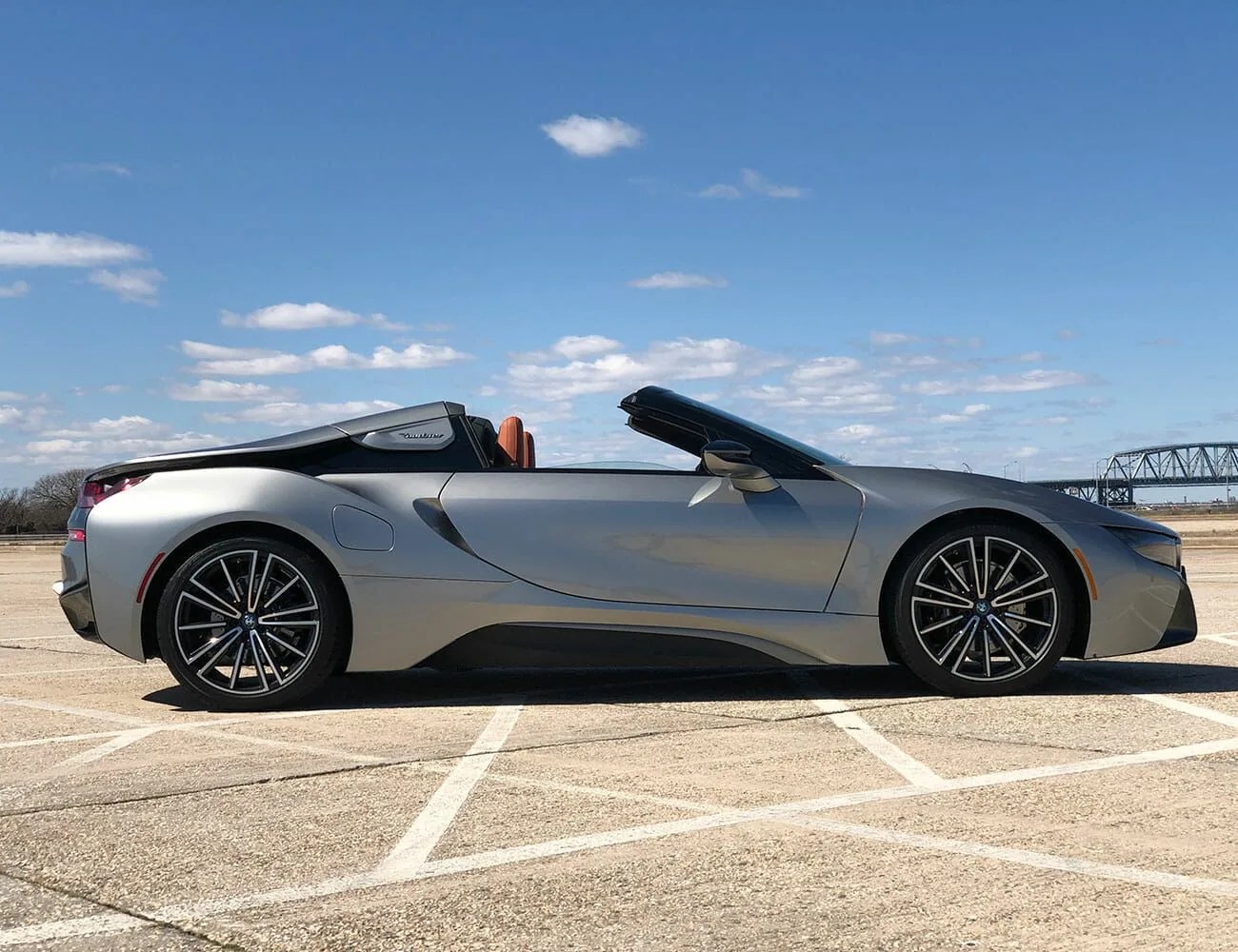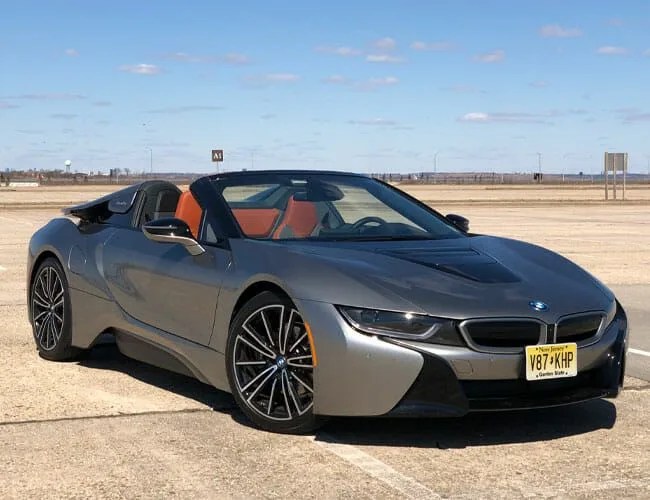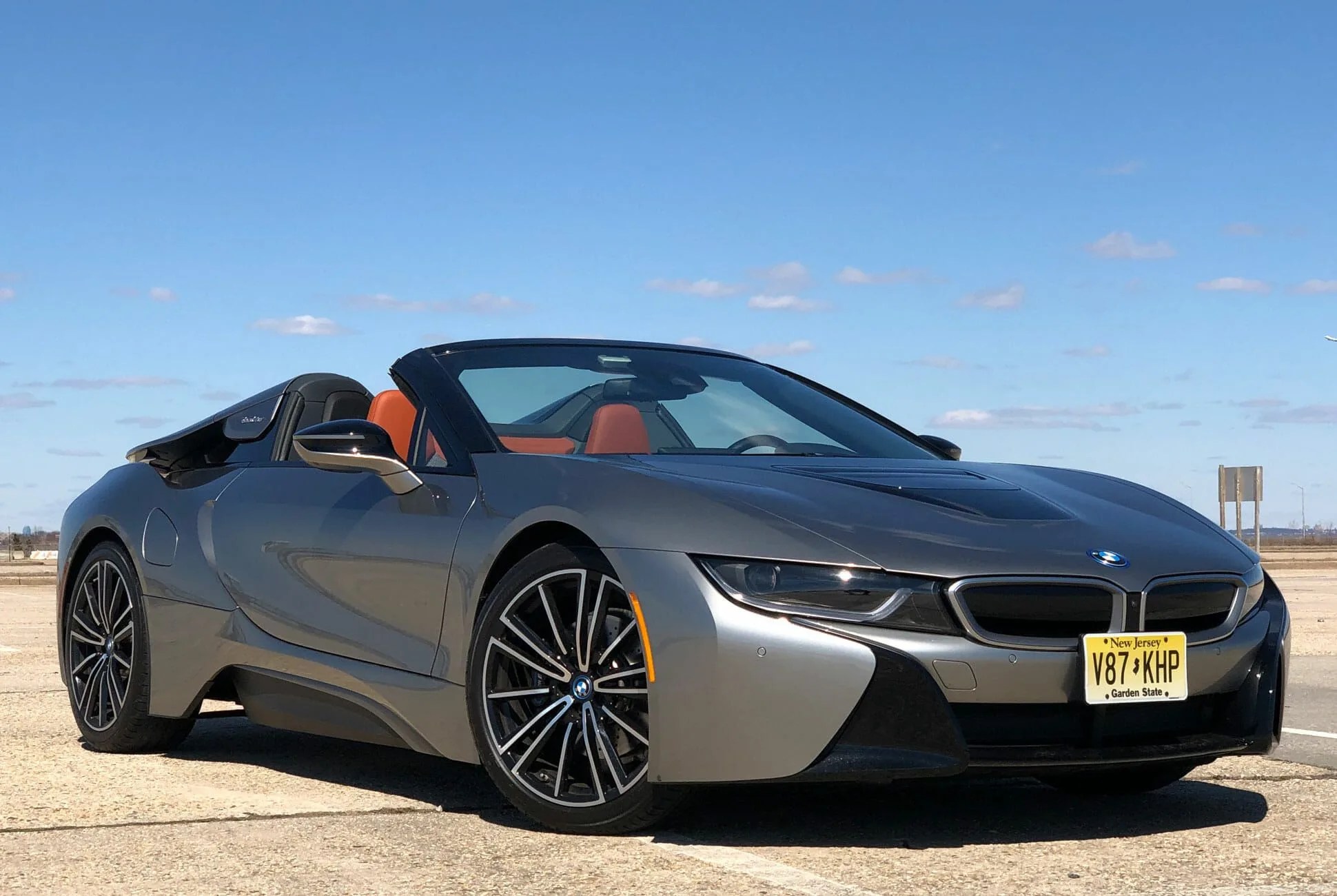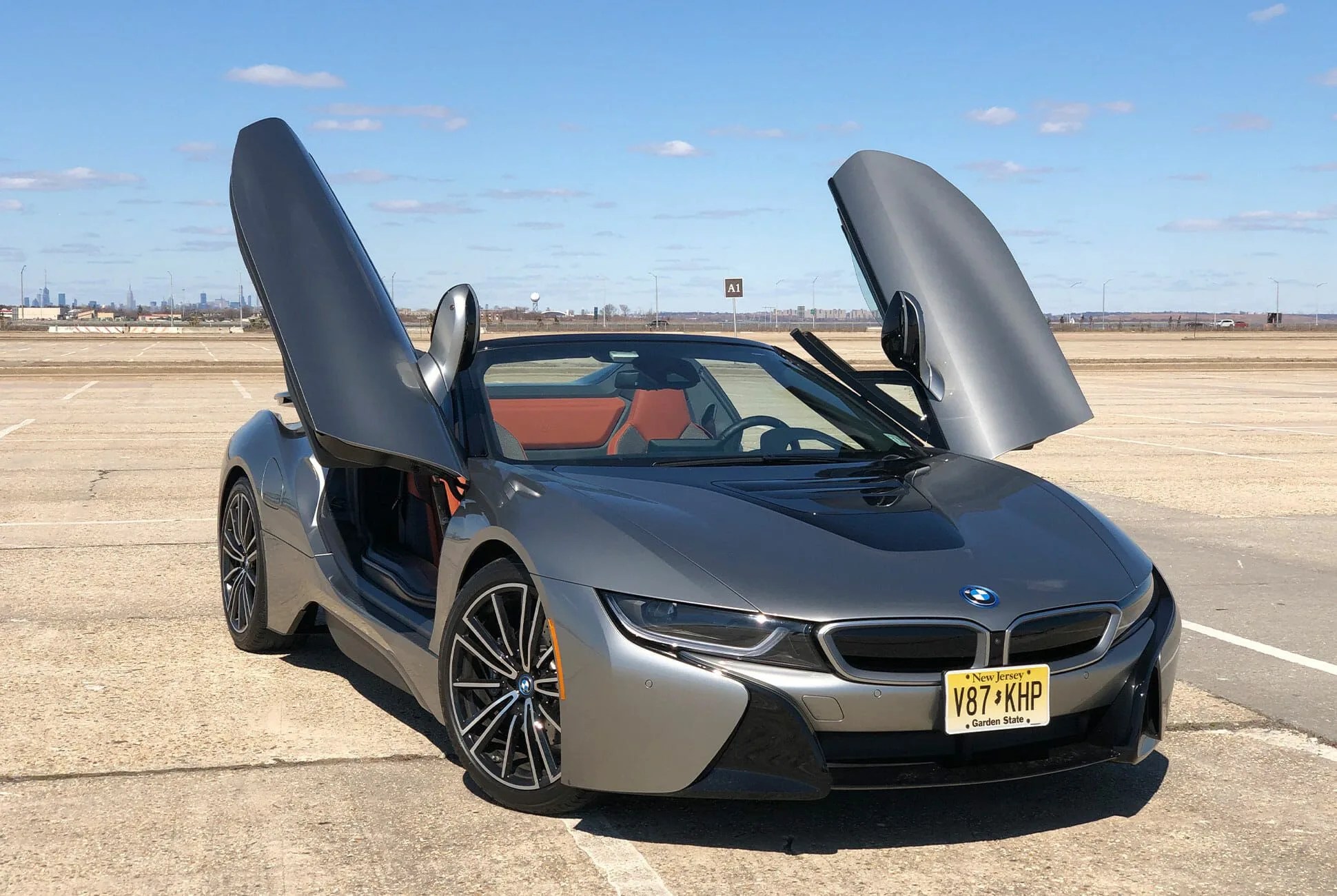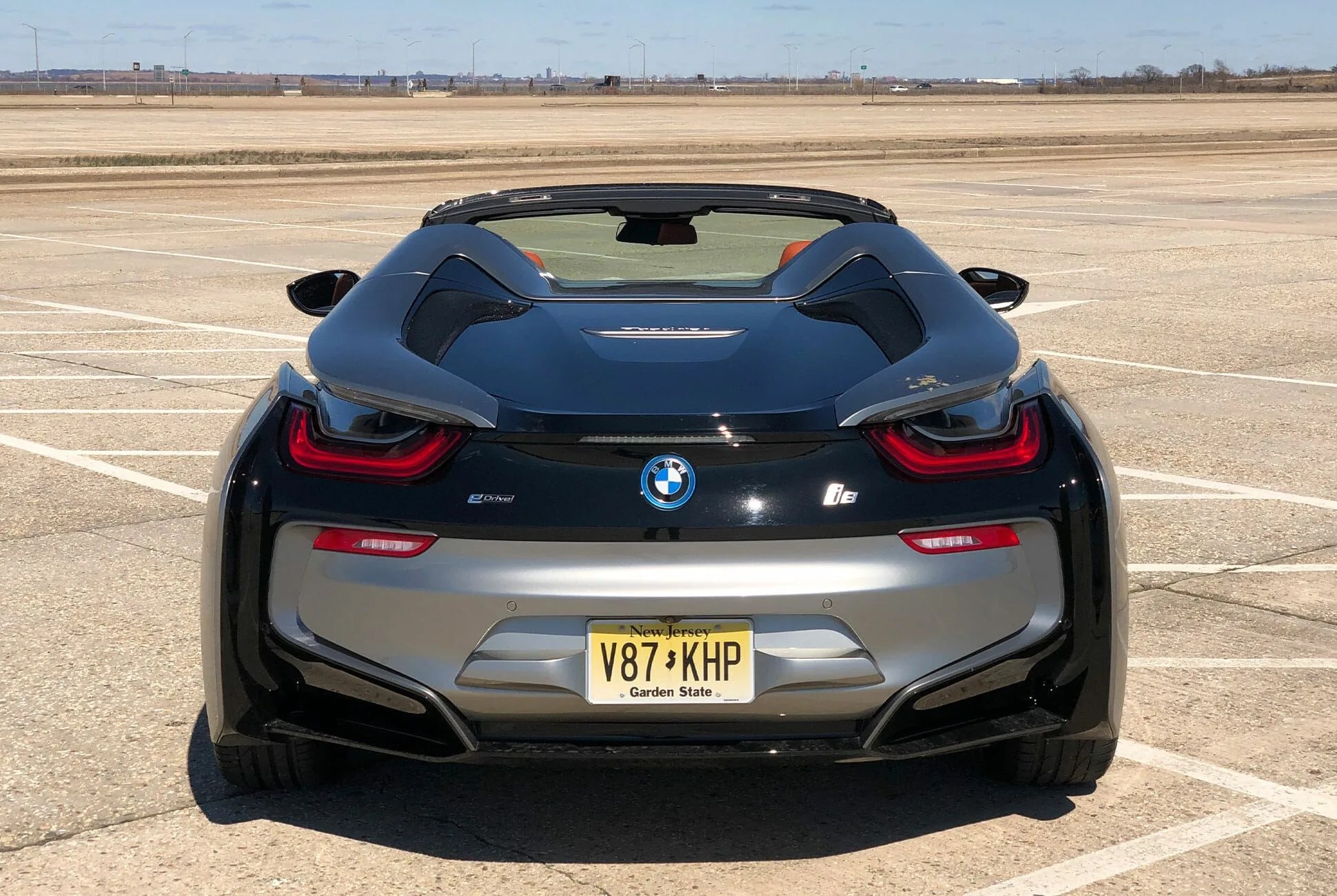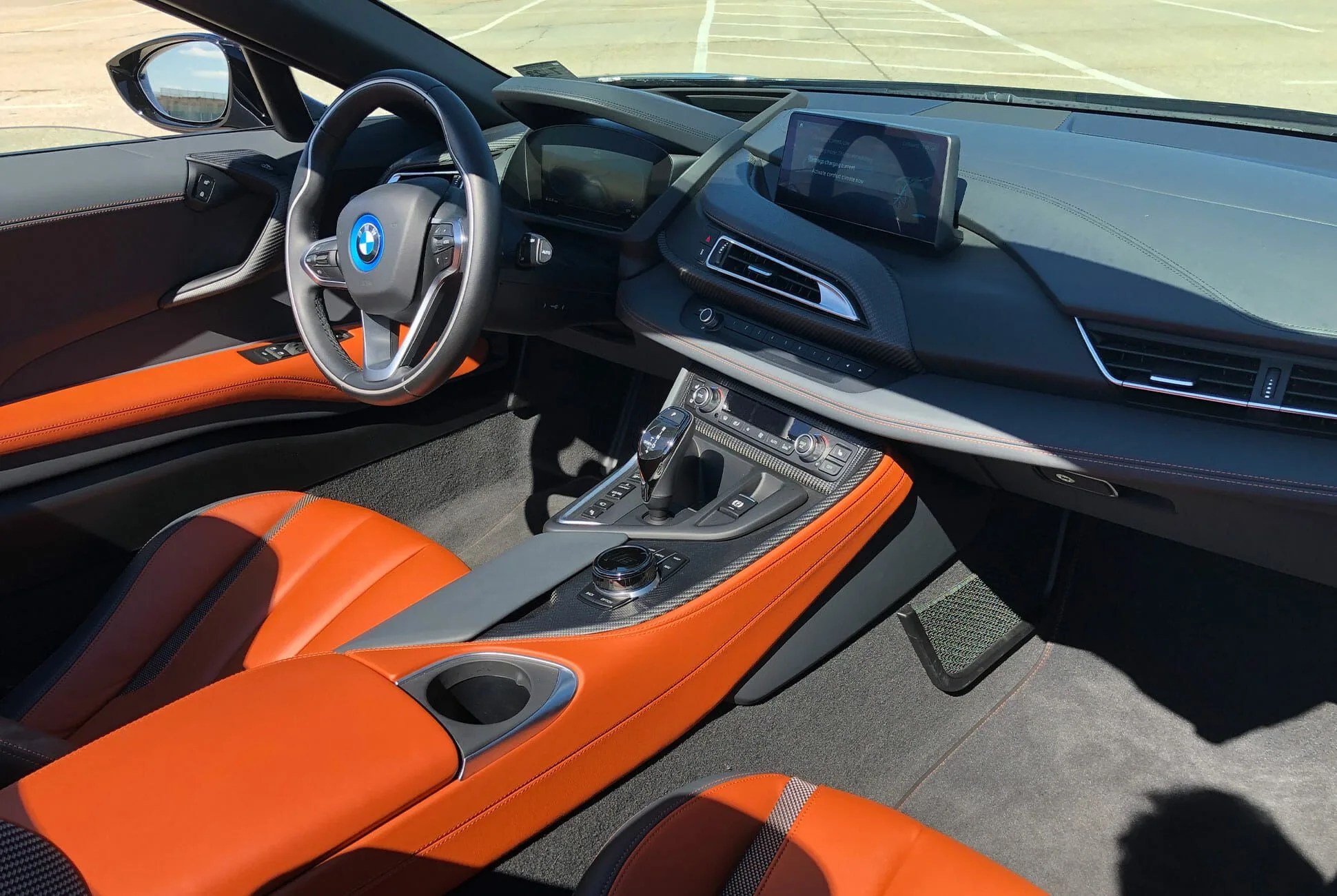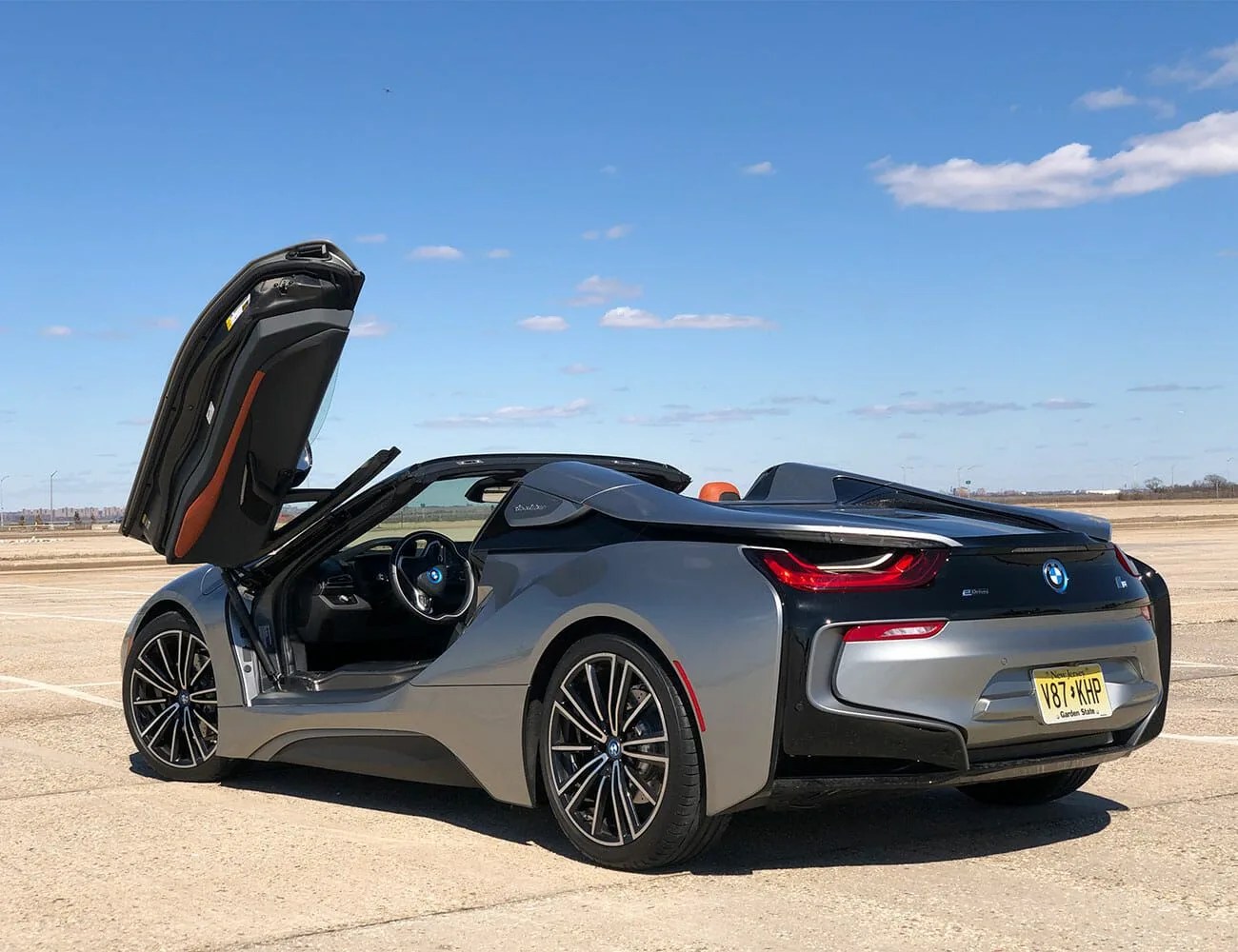Watch Out For: Climbing in and out, which is pretty much impossible to do with any decorum. Also, mockery from anyone owning a newer luxury car in the same price bracket; the i8’s interior would look cheap in a car half the price to the discerning eye.
Alternatives: The all-new 2020 Porsche 911 Carrera 4S Cabriolet ($133,400), the Mercedes-AMG GT C Roadster ($158,850), the Audi R8 Spyder ($182,100). Oh, and there’s the brilliant all-new Aston Martin Vantage ($149,995), if you’re not wedded to that convertible body style.
Review: The problem with visions of the future is that they rarely come true—and they tend to date quickly when they don’t. The i8 first reared its head a decade ago; granted, it was called the Vision EfficientDynamics then, but a glance at that concept car is all it takes to see that most of its style and substance made it to the streets. In those days, the idea of pairing a compact gas-powered engine to a plug-in battery pack was fresh and exciting; after all, General Motors had just unveiled the production version of the Chevrolet Volt, and Tesla was still three years away from flipping the automotive space on its head with the Model S. The i8’s idea of allying a turbocharged inline-three with a lithium-ion battery pack and electric motor to make a car that combined Porsche performance with econo-car efficiency felt like a window into a better tomorrow—one where even the threat of $7/gallon gas couldn’t suppress our sports car dreams.
But in 2019, when fully electric vehicles have been embraced—by the zeitgeist, if not the mass market—the i8 feels like a throwback, not a look forward. It’s a feeling that’s exacerbated the moment you swing your legs over the awkward door sills and plop into the interior, which already feels dated. The all-digital instrument panel looks two sizes too small by today’s standards, with an unfortunate amount of black plastic bezel on each side of the screen. Same goes for the iDrive screen, though at least that now includes touchscreen capabilities—handy for operating Apple CarPlay, if nothing else. The wiper and blinker stalks feel old and cheap. And the radio presets allocated via iDrive, oddly enough, don’t correspond to the hard buttons next to the volume knob.
It’s not all bad, though, The orange-leather-and-gray-cloth trim found in my tester add a distinctive touch; the color combination is a matter of personal taste, but the material pairing feels premium in a way that breaks it apart from the six-figure car pack. The seats are comfortable—far more accommodating than the hard-sided Recaros and their clones found in many similarly-priced sports cars whose owners want to hit the track (or at least make it seem like they do).
The exterior, though, is how i8 sales are made. The car is still every bit as visually arresting as it was a decade ago, even now resembling a refugee from Minority Report or I, Robot—a shape too irrational to co-exist with ‘97 Honda Accords and late-model Chevy Silverados and busted-up panel vans. Low and slippery, it looks like a well-oiled shark as it cuts through traffic towards you. And unlike some hardtops that meet the Sawzall, the drop-top conversion does the look no harm; it’s still every bit as alien on the road, it just happens to now let others see the human hosts within. And the roof’s quick transition time means you won’t be caught with your top down often; it can flip from open to closed in 16 seconds—shorter than plenty of traffic lights.
